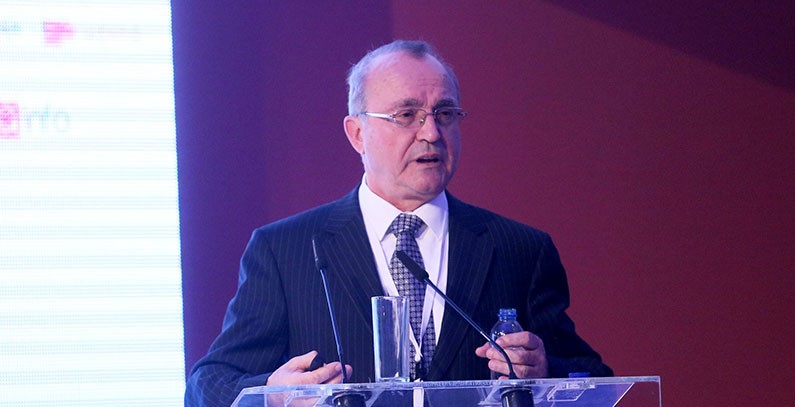
Photo: Nikola Rajaković
Author: Prof. Nikola Rajaković, School of Electrical Engineering (ETF), University of Belgrade
In the process of the energy transition, the integration of renewable energy sources is one of the central issues for experts. Without the electricity system’s synergies with other sectors (natural gas, transportation, heating, and industry) the integration of renewables is almost unfeasible. Energy transition definitely is a great business opportunity.
In the context of more intensive use of renewable energy sources, the Serbian government’s decision to suspend payments of incentives for renewables due to the state of emergency is noteworthy, Professor Nikola Rajaković of the Faculty of Electrical Engineering at the Belgrade University writes in part 3 (part 2) of his opinion piece for Balkan Green Energy News.
Renewables integration is a central issue for experts
The crucial change that will take place in the coming years is an increasingly marked intermittence of production. In that context, the integration of renewable energy sources is a central issue for experts.
Experts could help energy systems successfully operate with as much as 100% of production coming from renewable energy sources
The latest studies are very encouraging because they indicate that experts could help energy systems successfully operate with as much as 100% of production coming from renewable energy sources. This task involves short- and long-term aspects of balancing production with consumption, whose primary goal would be to achieve the optimal sizing of energy storage facilities.
The broad integration of renewable sources is too expensive if it is done within the electricity sector alone
It is evident that the broad integration of renewable sources is too expensive if it is done within the electricity sector alone. That is why synergies with the transportation sector (storage in batteries of electric automobiles), with the heating sector (turning electricity surpluses from solar and wind power plants into heat, with large heat storage facilities – boilers), with pumped-storage power stations, with compressed-air storage facilities, and, finally, with transforming electricity into liquid hydrogen, are important options for an economical energy transition.
Coronavirus and incentives for privileged producers
The situation with coronavirus and the state of emergency that was introduced in Serbia provided grounds for the government to suspend the payment of incentives for renewable energy sources. This decision has postponed the payment of subsidies for green electricity and relaxed the financial situation for state power utility Elektroprivreda Srbije (EPS) given that the current 262 privileged producers (with a total installed capacity of around 456 MW) soak up some EUR 14.2 million in incentives a month.
Privileged producers receive a total of EUR 14.2 million in incentives a month
In the existing incentives scheme, there are a lot of open issues because the bulk of its financial burden is shouldered by EPS. The purpose of introducing the incentives in the first place was to kick-start the use of renewables in Serbia, and time has shown that this made sense.
The next stage is abandoning incentives and switching to auctions
Since the costs of solar and wind technologies have fallen dramatically, making them competitive, the next logical stage is abandoning the incentives and switching to auctions, or some other more appropriate models.
The incentives were designed in such a way that consumers should pay more for green electricity (after all, consumers always pay for everything – it is only that the money moves in different ways under different models). The amount of revenues collected from buyers of green kilowatt hours must be such that it covers EPS’ financial losses on those grounds, or, technically speaking, the financial balance of the incentives must be maintained exclusively on the end-user side through mechanisms that also include raising the median price of electricity.
Contrary to the original idea, the financial burden of the incentives has largely been shifted to EPS
However, contrary to the original idea, the financial burden of the incentives has largely been shifted to EPS. The reason is the absence of a mechanism that would balance the increased production of green, incentivized electricity with price hikes for end consumers. The lack of such a mechanism has created a “grey area” where EPS, due to its sizable negative balance, caused in part by paying the incentives for green kilowatt hours, must seek state intervention from the budget, and such an option is far less fair.
Essentially, today’s EPS, as a state-owned enterprise, cannot operate in the long run with a negative balance from renewables incentives, and the only question is how the government will offset it – either through price hikes, which would be fairer, or from the state budget, which would be less fair!
Conclusion: energy transition as a business opportunity
The entire transition process can conditionally be reduced to three main issues: technical-technological, regulatory, and economic-financial. At the moment, it appears that their resolution is going well, but many issues remain open in Serbia and the region. A particularly sensitive problem is shutting down lignite-fired power plants.
It is certain that the region will solve energy problems much easier if its energy sector is viewed as a whole in terms of geography
When analyzing energy transition, it is important to note that the transition process brings business opportunities on an unimaginable scale. Research projects, the applied pilot solutions of renewable energy microgrids, mastering the industrial-scale production of components and complex systems, designing energy sub-systems and systems, system integration projects, software development, mastering the optimal industrial-scale exploitation of lithium in Serbia and turning it into finished products, and energy efficiency and environmental protection projects are but a few of the potential business opportunities.
A more radical stride towards renewable sources will again open a realistic opportunity for full energy independence for Serbia
It is certain that the region will solve energy problems much easier if its energy sector is viewed as a whole in terms of geography since individual actions in addressing these complex issues are more expensive.
In conclusion, it is also important to note that a more radical stride towards renewable sources will again open a realistic opportunity for full energy independence for Serbia. A transition to this form of energy independence needs to be accelerated given that it is clear that the marginal price of a megawatt hour produced from coal will get higher and higher. This is what decision makers should keep in mind.
So, even though decarbonization as a process is certainly expensive, it can also turn out to be an exceptionally successful economic option – through the realization of the business opportunities its creates. Lagging behind in seizing the business opportunities offered by the inevitable decarbonization process can make decarbonization much costlier!


















Be the first one to comment on this article.